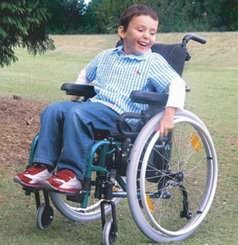Muscular Dystrophy
There are various types of muscular dystrophy that are present in the United States. All are a condition in which the muscles are easily damaged for one reason or another. Muscular dystrophy is most prevalent in young boys, however, it can be seen in girls and in adults.
Duchenne Muscular Dystrophy
Duchenne Muscular Dystrophy is a type of muscular dystrophy in which there is little to no Dystrophin produced in the body. Dystrophin is a protein found in muscles that help them to grow and strengthen. Without this protein, muscles will begin to degenerate. This lack of Dystrophin is caused by a gene mutation in the child’s DNA. This may be hereditary or a new mutation that occurred during the copying process.
Signs and Symptoms
Some children can be diagnosed with Duchenne Muscular Dystrophy in early infancy, although, most children are diagnosed sometime before the age of 6. Some signs of this disease include delays in walking and talking, having trouble sitting up, fatigue, learning disabilities, large calf muscles, and walking on tip toes.
Prevalence
Duchenne Muscular Dystrophy is the most common degenerative muscle disease in the world. It is found in 1 out of every 3,500 to 6,000 male births. It is also found in females, however, it is rare. It is also a childhood disease. It is found early on and children often are unable to walk by age 13. The average life expectancy of a child with this disease is mid twenties.
Treatment
Unfortunately, there is no cure for Duchenne Muscular Dystrophy. Any treatment that is given is only to improve the quality of life for the patient. Steroids are generally used to slow the loss of muscle strength. Green tea, vitamin E, fish oil, creatine, Amino Acids, and Albuterol are also used to help slow the disease growth. Activity is another way to help keep the muscles strong as long as possible. Bed rest is likely to make the disease worse. As the disease progresses, wheel chairs, assisted ventilation, and heart medications may be needed to improve the quality of life for the patient. There is no cure, however, there is much research being done to find a cure for Duchenne Muscular Dystrophy.



